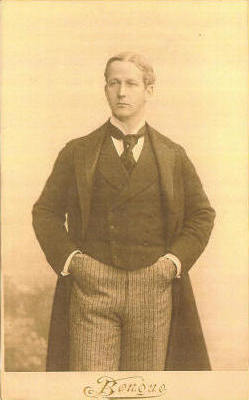Arthur Brisbane (Arthur Brisbane)

In 1882, Arthur Brisbane began work as a newspaper reporter and editor in New York City, first at the Sun and later Joseph Pulitzer’s New York World. Hired away from Pulitzer by William Randolph Hearst, he became editor of the New York Journal and Hearst’s close friend. His syndicated editorial column had an estimated daily readership of over 20 million, according to Time magazine. In 1897, he accepted the editorship of the Evening Journal, flagship of the Hearst chain, and through it gained influence unmatched by any editor in the United States. His direct and forceful style influenced the form of American editorial and news writing. The saying, “If you don’t hit the reader between the eyes in your first sentence of your news column, there’s no need to write any more,” is attributed to him. Hearst biographer W. A. Swanberg describes Brisbane as “a one-time socialist who had drifted pleasantly into the profit system… in some respects a vest-pocket Hearst — a personal enigma, a workhorse, a madman for circulation, a liberal who had grown conservative, an investor.” While an employee of Hearst—at one point boasting of making $260,000 in a year—Brisbane also was known for buying failing newspapers, re-organizing them, and selling them to Hearst. He bought the Washington Times and the Milwaukee Evening Wisconsin in 1918 and sold both to Hearst 15 months later. He later bought the Detroit Times on behalf of Hearst.
In 1918, Arthur Brisbane became editor of the Chicago Herald and Examiner, and in the 1920s became editor of Hearst’s first tabloid, the New York Mirror. He remained part of the Hearst media empire until his death in 1936. His daughter Sarah married one of his Daily Mirror employees, Tex McCrary, who later became a radio-TV personality with second wife Jinx Falkenburg. Several volumes of Arthur Brisbane’s editorials were published, including “The Book of Today,” “The Book of Today and the Future Day,” and “The Brisbane advertising philosophy.” At the time of his death, he was considered the “virtual executive director” of the Hearst news and media empire. From 1924 until 1935, artist Mel Cummin “originated and drew many of the big, eight-column cartoons” for Brisbane’s editorials in the New York Sunday American, the New York Evening Journal and occasionally The Mirror. Cummin, a well-known member of the Explorer’s Club, called Brisbane “a well-informed naturalist,” and said the two collaborators discussed the subject of naturalism frequently. He died in Manhattan on Christmas Day, December 25, 1936 and was buried in the Batavia Cemetery at Batavia, New York.
Born
- December, 12, 1863
- USA
- Buffalo, New York
Died
- December, 12, 1936
- USA
- New York, New York
Cemetery
- Batavia Cemetery
- Batavia, New York
- USA


